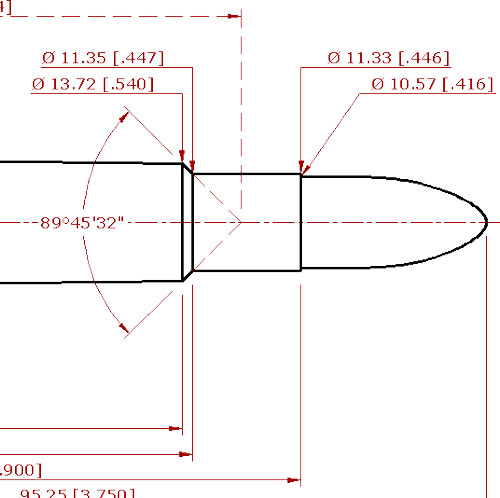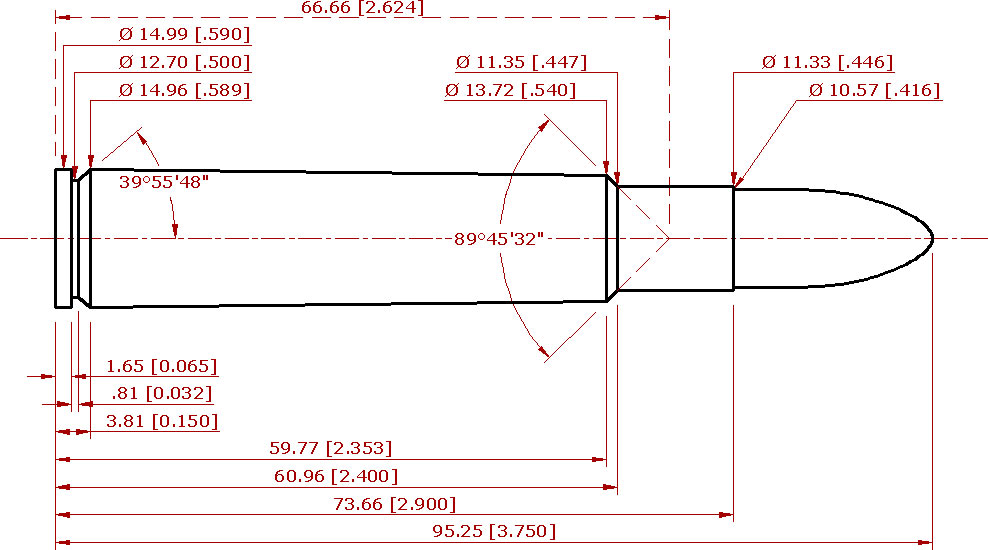

We often hear the story that the .270 Winchester was a cartridge made successful by one man, Jack O'Connor. Well, I think that is a bit of an exaggeration.
There is no question that O'Connor's writing about his experiences with the cartridge helped it along immensely, he didn't “make” it. The cartridge was good enough to make it on its own, O'Connor just speeded up the process.
Another cartridge that has been very successful in the game fields of the world whose success has largely been attributed to one man is the .416 Rigby cartridge and African Professional Hunter, Harry Selby. How that came to be is an interesting story.
Like all self-respecting Professional Hunters in Africa, Harry Selby used a heavy caliber English double rifle for his work. On one safari, his trusty double managed to get run over by the Land Cruiser, causing enough damage that it had to be returned to England for repairs which would take several months to complete.
In the interim, Selby visited a gunshop in Nairobi and purchased a John Rigby made Mauser rifle chambered for the .416 Rigby cartridge. It worked so well for him that even after his double was repaired, he never went back to it and remained with his .416 magazine rifle.
Here's what John “Pondoro” Taylor had to say about it in his iconic book African Rifles and Cartridges, “John Rigby clinched his reputation as African gunsmith when he placed his .416 Mauser on the market for heavy and dangerous game. If for any reason you prefer a magazine rifle to a double, there is no finer or more satisfactory weapon for all-around use against dangerous animals than this .416.”
He also wrote, “This was Blunt's favorite rifle, and the weapon with which Daly shot most of his elephant.”
The cartridge was designed by John Rigby & Company in 1911 as a magazine rifle suitable for use in India and Africa. At about the same time, Jeffery came out with its .404 cartridge and Westley Richards with its .425, all designed for magazine rifles. These three cartridges were made possible largely due to the development of Cordite smokeless powder and mauser's great 98 Mauser action. Both the .404 and .416 became very popular in Africa – the .425 less so.
The original loading of the .416 Rigby used a 410 grain bullet at 2300 fps. This was later standardized with a 400 grain bullet at 2400 fps. Even at the higher velocity, the big cartridge is really loafing with about 47,000 psi chamber pressure. Compared to some of the newer .416 loadings, they reach the same general ballistics as the Rigby, but at much higher pressures, well over 60,000 psi.

The downside to the large case is that, in general, a large magnum action is needed to house it. It was designed around the Mauser No. 5 Magnum action. Most Rigby-made rifles used this action. However, a few were made on standard length 98 Mauser action by milling away a lot of metal. The one used by Harry Selby was one of these rifles.
In its heyday, the only viable source of ammunition for the big .416, along with most of the other large bore cartridges of British origin, was from Kynoch. After the end of WWII, for numerous geo-politial reasons, the demand for large bore rifles and ammunition decreased substantially.
Ultimately, Kynoch ceased production of all ammunition, including the big Rigby .416. As a result, most of the English express rifles withered on the vine. It remained that way, with African hunters switching to cartridges that were still being manufactured.
Winchester came out with it's Model 70 chambered for the .458 Winchester cartridge. Many professionals, including Selby, made the switch. Initially, the .458 had some growing pains, but they were finally sorted out.
This was the sad situation until a young American by the name of Jim Bell came along and started a company called B.E.L.L., standing for Brass Extrusion Laboratories Ltd. His small company literally resurrected the large bore rifles from premature deaths, by providing the means to produce ammunition for them. The .416 Rigby is among those resurrected.

Next Step: Get your FREE Printable Target Pack
Enhance your shooting precision with our 62 MOA Targets, perfect for rifles and handguns. Crafted in collaboration with Storm Tactical for accuracy and versatility.
Subscribe to the Gun Digest email newsletter and get your downloadable target pack sent straight to your inbox. Stay updated with the latest firearms info in the industry.

![Best Concealed Carry Guns In 2025 [Field Tested] Wilson Combat EDC X9S 1](https://gundigest.com/wp-content/uploads/Wilson-Combat-EDC-X9S-1-324x160.jpg)


![Best 9mm Carbine: Affordable PCCs [Tested] Ruger Carbine Shooting](https://gundigest.com/wp-content/uploads/Ruger-Carbine-Shooting-100x70.jpg)
![Best AR-15: Top Options Available Today [Field Tested] Harrington and Richardson PSA XM177E2 feature](https://gundigest.com/wp-content/uploads/Harrington-and-Richardson-PSA-XM177E2-feature-100x70.jpg)

416 Rem Magnum in my choice.
The action is smaller and easier to get.
Standard long magnum action.
Brass is easy to get, long belted magnum.
Takes less powder to reload the ammo, and it takes a lot of powder to fill up any big bore cartridges.
More than 90 grains, to fill the 416 Rigby in some loading.
The 416 Rem, guns and ammo, weight a lot less, than the Rigby does,
and when, you have to walk, a lot of miles, on a Big Game, hunt, every
ounce of weight, you have to carry, adds up fast.
The 416 Rem is cheaper to shoot.
The 416 Rem will anything the 416 Rigby will do!
The 416 Rem is, Easier and cheaper to own.
That my thoughts.
Good Day